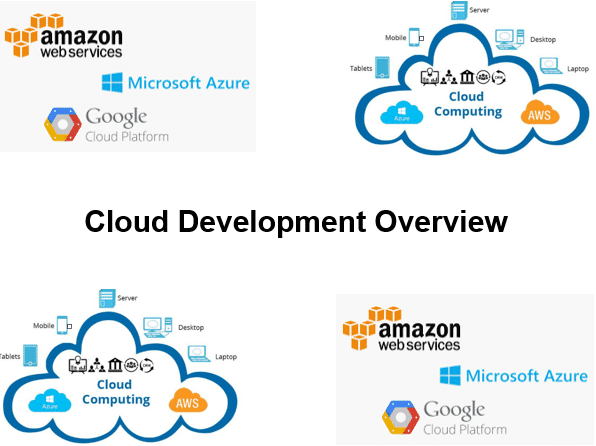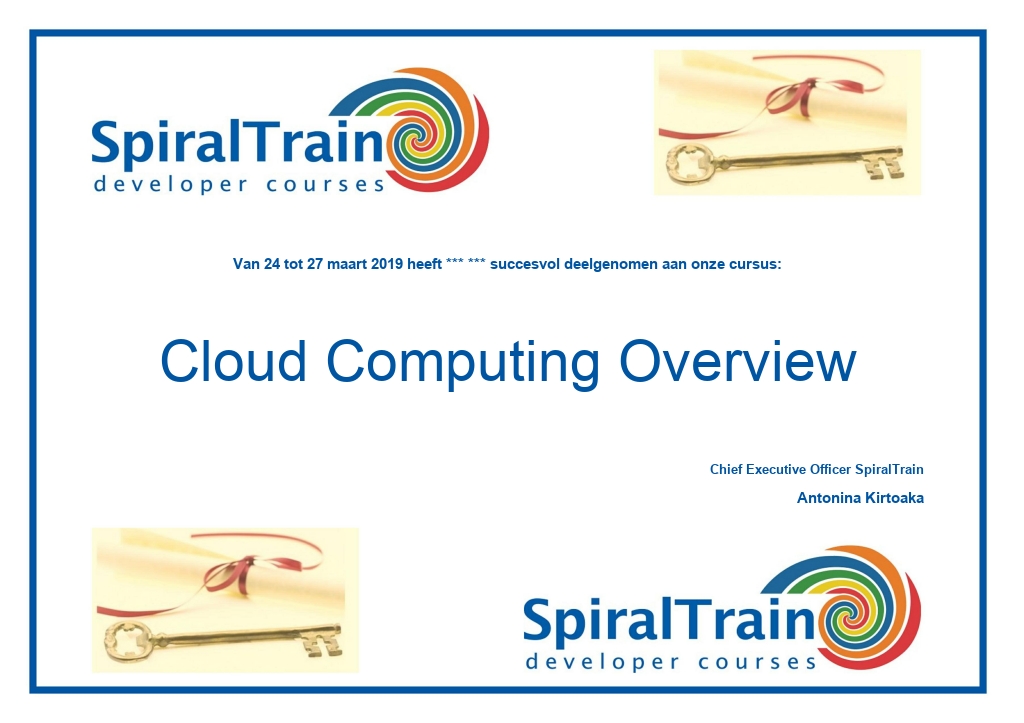- Leren door doen
- Trainers met praktijkervaring
- Klassikale trainingen
- Gedetailleerd cursusmateriaal
- Duidelijke inhoudsbeschrijving
- Maatwerk inhoud mogelijk
- Trainingen die doorgaan
- Kleine groepen
Cloud Computing wordt door steeds meer organisaties ingezet om in IT hun behoeftes te voorzien. Cloud Computing betekent een grote verandering in het denken over de IT infrastructuur. Zo elimineert Cloud Computing de noodzaak om kosten te maken voor de aanschaf van hardware en software en voor het opzetten en beheren van eigen on-site datacenters. Veel Cloud Computing services worden als self-service op aanvraag geleverd en tegen veel minder kosten dan een infrastructuur in eigen beheer.
De cursus Cloud Computing gaat van start met een bespreking van de voordelen van Cloud Computing zoals minder beheerskosten, een betere schaalbaarheid, up to date security en backup. Ook wordt ingegaan de mogelijkheden voor virtualisatie en monitoring.
Voorts wordt aandacht besteed aan de verschillende typen zoals public clouds die worden beheerd door externe cloud providers en private clouds die specifiek voor één bedrijf zijn bedoeld. Ook hybride en community clouds worden besproken.
Onderdeel van het programma van de cursus Cloud Computing Overview is ook wat wel de Cloud Computing Stack wordt genoemd. Cloud Services zijn er in vier hoofdcategorieën: Infrastructure as a Service (IaaS), Platform as a Service (PaaS), serverloos en Software as a Service (SaaS).
Verschillende Cloud Providers zoals Amazon Web Services, Microsoft Azure en Google Cloud passeren de revue. Er wordt ingegaan op hun verschillen en hoe je er applicaties op deployed.
Eveneens wordt aandacht besteed aan het gebruik van lichtgewicht container images die applicaties met alle dependencies bevatten en snel kunnen worden gestart. Het verschil tussen containers en virtual machines wordt besproken en zowel Docker als OpenShift containers komen aan bod.
Tenslotte wordt container orchestration met Docker Swarm en Kubernetes behandeld en komen ADC Controllers met Load Balancing en Multiplexing aan de orde.
De cursus Cloud Computing Overview is bedoeld voor een ieder die Cloud Computing wil gebruiken en een gedetailleerd begrip van de relevante technologieën wil hebben.
Ervaring met moderne IT-technologieën en bij voorkeur development methodologieën is vereist.
De theorie wordt behandeld aan de hand van presentatie slides. Demo's worden gebruikt om de theorie te verduidelijken. Tijdens de cursus worden theorie en exercises afgewisseld. Het cursusmateriaal is in het Engels. De lestijden zijn van 9.30 uur tot 16.30 uur.
De deelnemers ontvangen een officieel certificaat van deelname aan Cloud Computing Overview na succesvolle afronding van de cursus.

Module 1 : Cloud Computing Intro |
Module 2 : Type of Clouds |
Module 3 : Cloud Providers |
|
What is Cloud Computing? Cloud Computing Concepts Virtualization Principles Cloud Features Elasticity and On-demand Usage Measurement Benefits and Riscs Distributed storage Concurrent computing Redundancy and Security Virtual Servers Monitoring Application Health |
Platforms en Cloud Services Cloud Resource Administrator Cloud Service Owner Cloud Delivery Models Software as a Service (SaaS) Platform as a Service (PaaS) Infrastructure as a Service (IaaS) Combining Delivery Models Public and Private Cloud Hybrid and Community Cloud Cloud Balancing Cloud Bursting Architectures |
Amazon Web Services EC2 Instances AWS CLI Tools Amazon SimpleDB Services Deploying AWS Applications Microsoft Azure Configuring Services Fabric Controller Google Cloud Platform Using Google API's Google App Engine Cloud Storage |
Module 4 : Containerization |
Module 5 : Container Orchestration |
Module 6 : ADC Controllers |
|
Intro Container Technology Role of Containers Creating Containerized Services Managing Containers Managing Container Images Creating Custom Images Container Hosting Logical Pod Containers Containerization vs Virtualization OpenShift versus Docker Docker Details OpenShift Details Deploying Container Apps |
Docker Swarm Filtering and Scheduling Highly Available Infrastructure High Availability HA Discovery Service HA Swarm Managers Standard Constraints Custom Constraints Install and Configure Kubernetes Use Docker Client Stateless Apps on Kubernetes Statefull Apps on Kubernetes Serverless Computing |
What is an ADC? Load Balancing User Data Offloading of Secure Sockets Layer Offloading Firewall Functions Types of LoadBalancing Ensuring Server Health Monitoring DNS and HTTP Multiplexing Contributing in Cybersecurity Firewall Protection Facilities Preventing DDOS Preventing Vendor Lock In Future Improvements |
